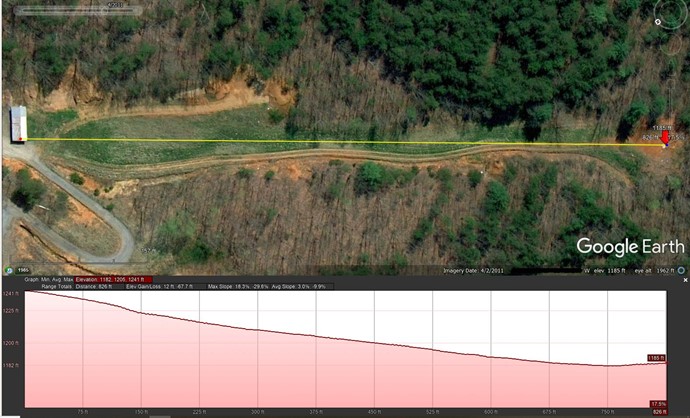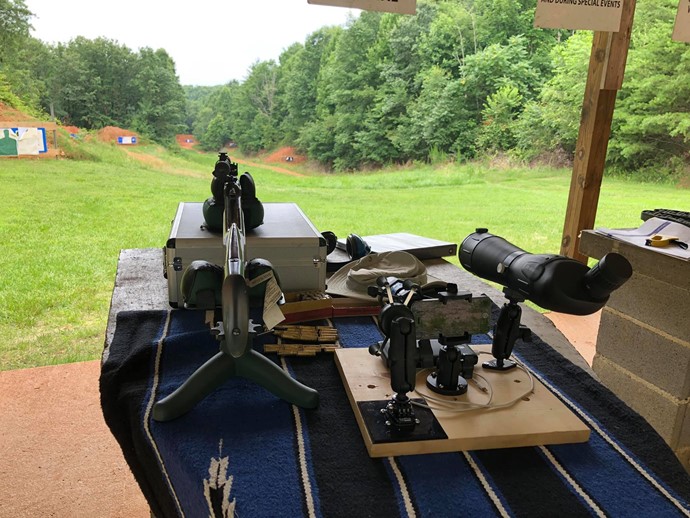Variables influencing angle of impact:
Rifle setup, height of sights above center line of bore.
Sight in distance and accuracy of load.
Muzzle velocity and ballistic coefficient or complete trajectory of load
Angle of inclination or declination of line of sight or elevation of muzzle and point of impact
With military tracking radar, your answer is a data line, but someone with Auto-Cad could plot the trajectory line properly as it is in reality, construct a normal line at the point of impact then construct a perpendicular and query what it's angle is thereby giving you your answer. All this varies with angle of line of sight in the world.
This is mind blowing stuff. Evry time I think I find something, it is just a formula to find a formula to find another formula...lol
Bullet is fired from a muzzle 45 inches above the surface.
Bullet is traveling at 1,478fps.
Bullet decelerates to 951fps impact velocity at 265 yards Bullet weight is 215 grains
Bullet impacts a vertical target 24" above the ground
Elevation difference from point of origin to impact is -58 feet, from 1,241 feet at the muzzle to 1,185 feet at impact, plus the 2 foot gain in elevation at impact on the target.
Muzzle angle is unknown, line of sight is level from the muzzle to 200 yards, plus 28 3/4" at 265 yards
Bullet trajectory's are approx. and can be corrected later...I think. I do not have exact data with me.
muzzle to 25 yards = +5 inches
muzzle to 50 yards = +8 inches
muzzle to 100 yards = +14.5 inches
muzzle to 125 yards = -- inches
muzzle to 150 yards = +10.5 inches
muzzle to 175 yards = -- inches
muzzle to 200 yards = + 0.5 inches
muzzle to 225 yards = -13 inches
muzzle to 250 yards = -- inches
muzzle to 265 yards = -28 3/4 inches I am hoping the angle at impact is less than 10 degrees. My plan is to set up two targets, one 6 feet behind the other and simply measure the different elevation of the impact holes of each target. I'd like to know the scientific method ;-) Still searching...

.jpg?width=50&crop=0,0,50,50)

 .
.












